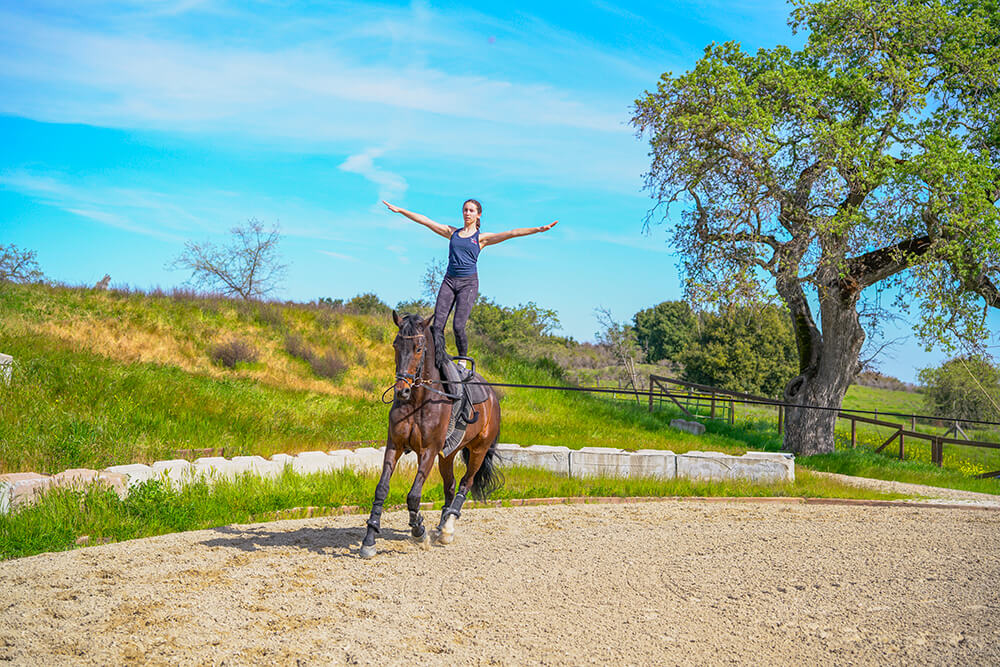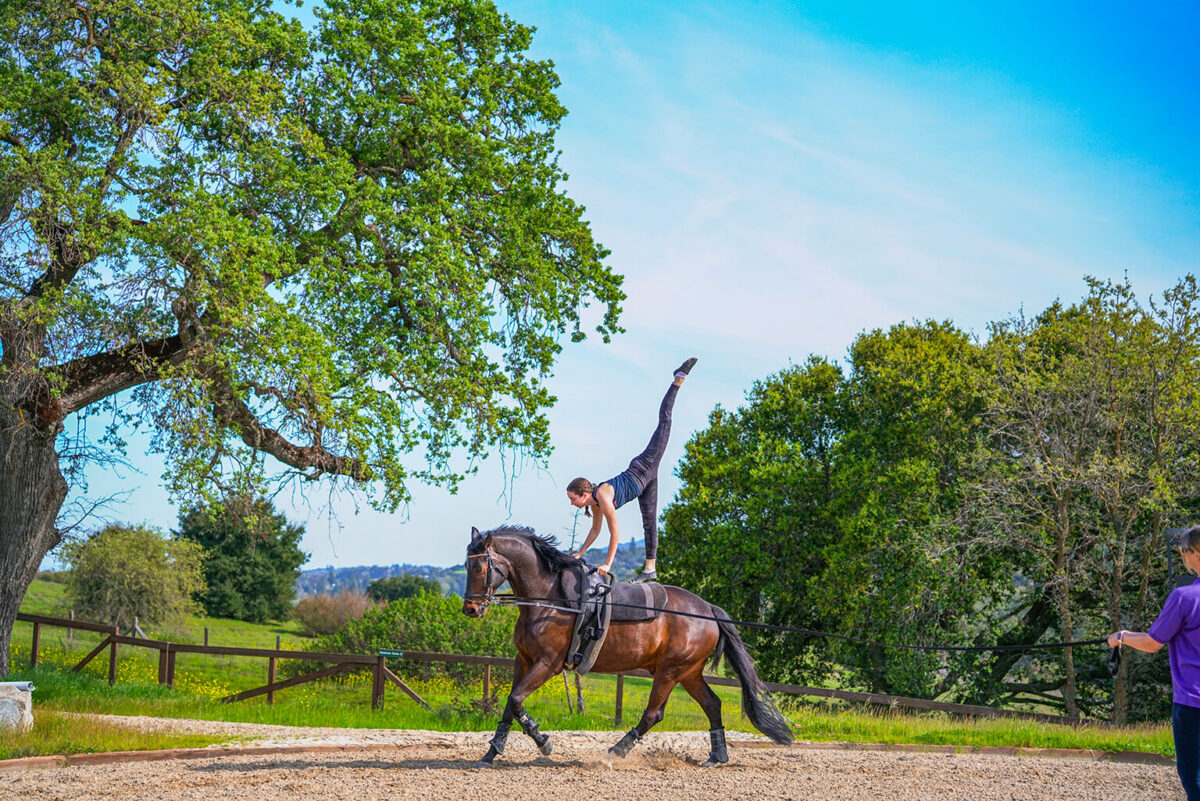Words and Photography by Johanna Harlow / Competition photo by Woodside Vaulters
If you happen to pass by the Woodside Vaulters’ gym, you might hear the steady clunk-clunk-clunk of Hanna Parker warming up. Sitting astride a mechanical barrel called a “movie,” which mimics a horse’s gait, this lithe young athlete swings herself into planks before scissor-kicking into handstands. Observing with a practiced eye is Krista Mack, who oversees the Woodside Vaulters program and acts as its head horse trainer. Nearby, a few horses poke their long velvety noses out of their stalls to watch and whinny.
Vaulting isn’t for the faint of heart. Think gymnastics on horseback. “A balance beam is the same every time,” notes Krista. Not so with a horse. A vaulter must adjust to each horse’s height, weight and gait. A horse’s mood can shift depending on its feeding schedule, the weather or even the full moon. Krista must be discerning in her role as lunger, guiding the horse in circles while the vaulter performs.
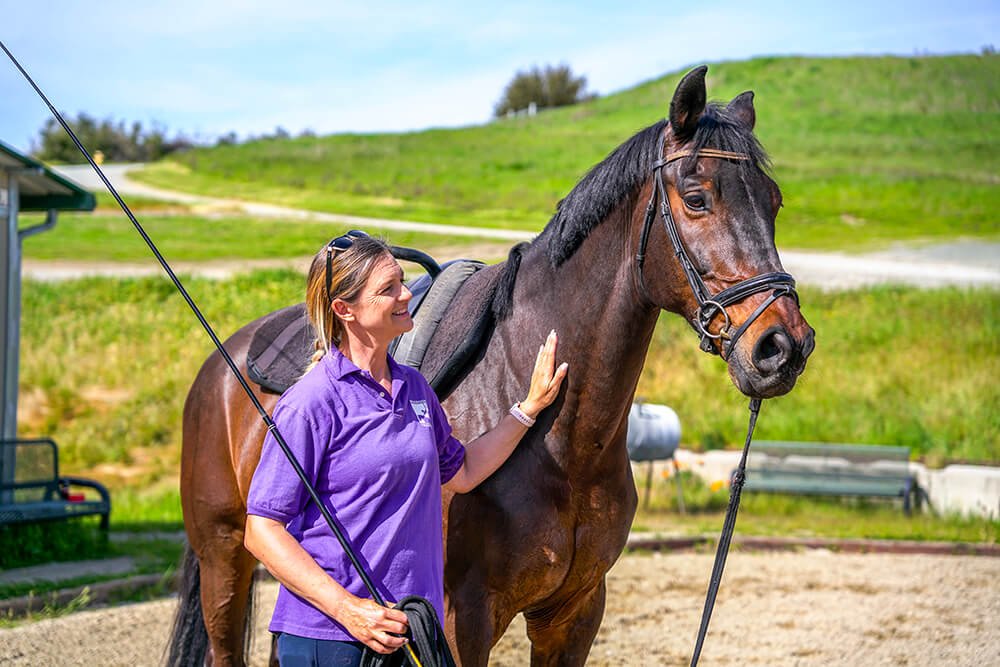
Growing up in Woodside, Krista has always been around equine kind. “I remember when I was little, like probably nine years old, we would ride our horses to each other’s houses—and then the horses would hang out while we had playdates,” she recalls. For sleepovers, her pony would spend the night in a guest stall. Krista has worked with the Woodside Vaulters for more than two decades now—and watched Hanna grow from a wee thing clambering around on the barrel to a serious competitor at the international level.
Hanna, a senior at Crystal Springs Uplands School, began vaulting during elementary school and coaching in 10th grade—just like her mother before her. In fact, Hanna’s mom, Isabelle Bibbler Parker, founded the Woodside Vaulters with Hanna’s grandparents and a coach from a previous club. Since 1990, their organization has taught students at walking, trotting and cantering levels (the faster and bumpier the horse, the more advanced the skills needed to stay out of the dirt). Six years after its inception, their club was already thriving, and its vaulters performed alongside the flower-covered floats at the Tournament of Roses Parade in Pasadena.
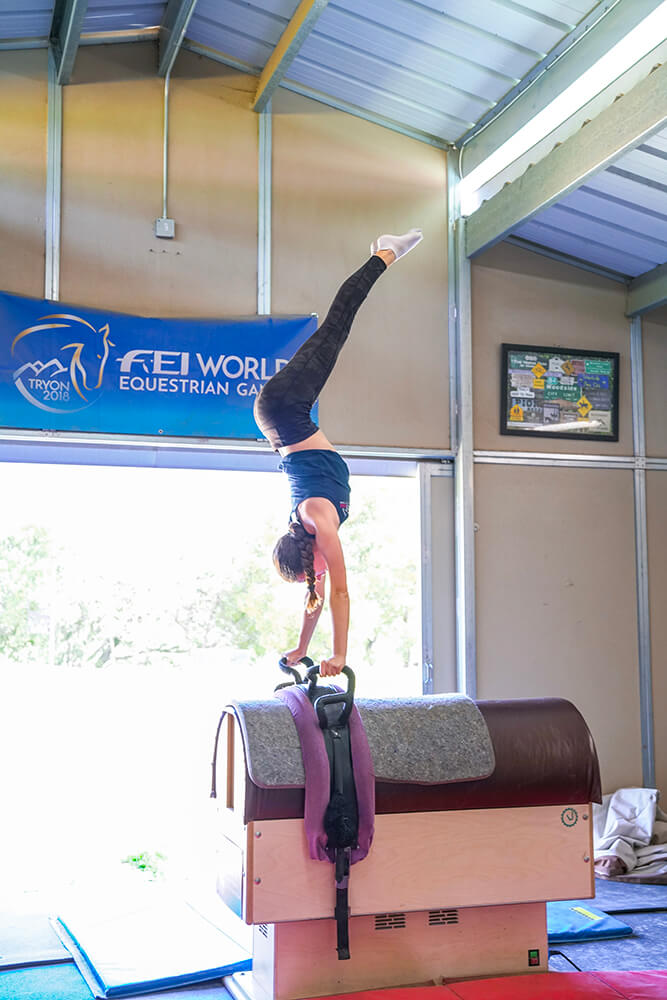
As the Woodside Vaulters continued to grow, they moved their program to the 270-acre Horse Park at Woodside. “There’s no place like the Horse Park,” Krista says. “We’re so fortunate to be here!” She notes that the ample space has allowed them to build not only two arenas, but also a combined barn and gym. This indoor area gives students a place to warm up and provides shelter for training when rain turns the outdoor ring into a giant mud puddle.
Today, the wispy, white clouds don’t threaten a downpour, so Krista heads out to the arena to warm up Salazar, Hanna’s equestrian partner for the day. After Hanna dismounts, she takes the reins of the conversation, steering the topic to the sense of family she’s found in the vaulting community. “I used to do gymnastics and it always felt like there were the little kids and there were the older kids,” she reflects.
Vaulters not only engage with other age groups, they also raise each other up. “I really enjoy now being one of those ‘big kids’ who gets to coach the little kids,” Hanna smiles. “As I was competing last year, all my little kids would come in and watch me compete. They get to cheerlead, and they get to experience what it might be like in a few years.”
A close-knit community is imperative for vaulters, especially those who pair up to compete pas de deux or with a team of six (sharing a horse in rotating groups of three). “I have always been a team or pas de deux vaulter. I love working with other people,” shares Hanna.
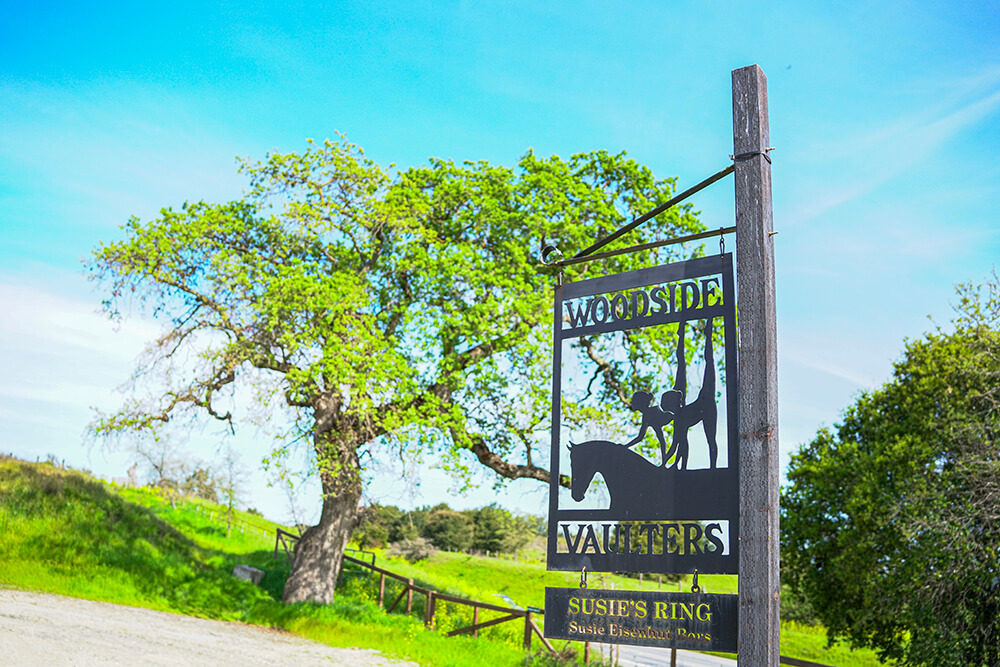 “I love the creativity that it takes to move in a space together.”
“I love the creativity that it takes to move in a space together.”
Hanna has difficulty describing the close bond she shares with her pas de deux partner Aria Deshpande. “I can’t describe the friendship I have with her,” she says at last. “We learned how to literally breathe together, move together, anticipate each other’s actions.” The two competed together in the Junior World Championships in Flyinge, Sweden, last year, twisting fluidly over and under each other as their horse cantered around the stadium.
Their horse is also a partner, Hanna points out. “As much as I had to learn to breathe with Aria, I’ve really had to learn how to breathe with my horse Calandra. Horses are so sensitive and they can tell when you’re breathing calmly. We did a lot of breath work last year.” Their hard work paid off, and Hanna, Aria and Calandra came in fourth at the championships. “We were .013 away from the bronze medal,” Hanna sighs, “which was a little bit frustrating—but I did get a very killer college essay out of it.”
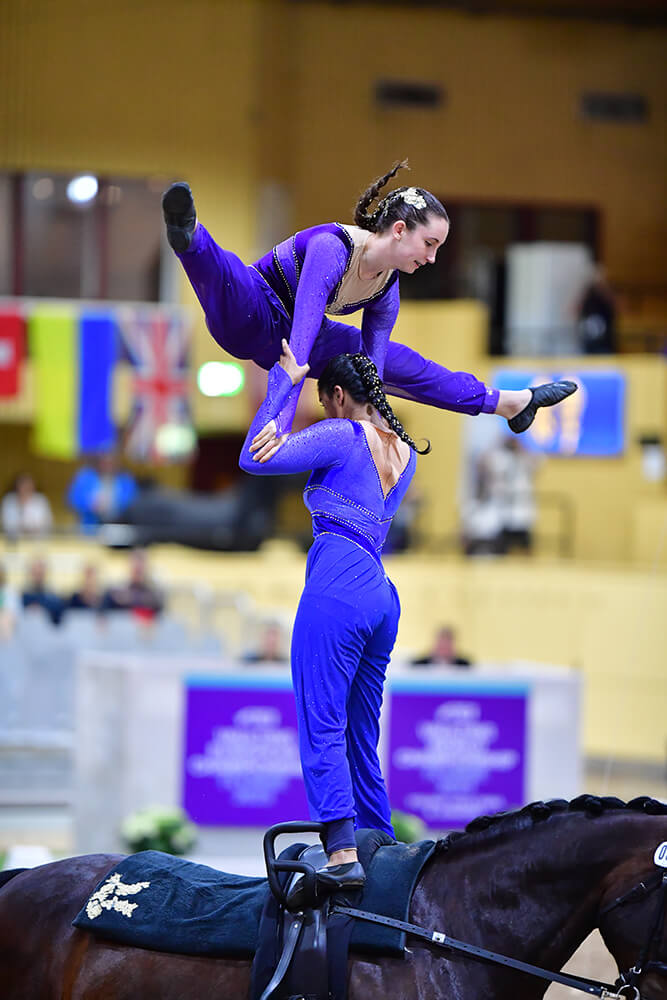
Does she ever get nervous in the arena? At competitions, sure—but from being on horseback, never. “I do have to work through fears and nerves, but it’s not about being on the horse. That is comfortable to me,” Hanna says. “I could take a nap on a horse any day.”
She explains that the club has taught her horsemanship as much as vaulting. All students are instructed in horse handling as well as grooming, feeding and safety. “If you swim, you don’t hop out of the pool and then go give it a hug,” Hanna jokes. But horses require care—and a showering of kisses. “I never just leave after practice.”
Right before Hanna steps into the arena, she makes a confession. “I don’t ride,” she divulges. Sure, she can stand on a horse’s back or swivel her legs about with acrobatic ease—but only going in circles. “If you told me I needed to ride a horse from point A to point B, I could probably manage it,” she laughs. “I’m hoping I can start to learn.”
horse play – woodsidevaulters.org
VAULTING THROUGH THE AGES Vaulting dates back to ancient Roman times and also has ties to bull-leaping in ancient Crete, but the sport reached the United States much more recently. After watching vaulters in Germany in the 1950s, Elizabeth Searle introduced it to her pony club in Santa Cruz County. Northern California has been a hub for the sport ever since. Equestrian vaulting will make its debut at the 2032 Olympic Games in Brisbane, Australia.
